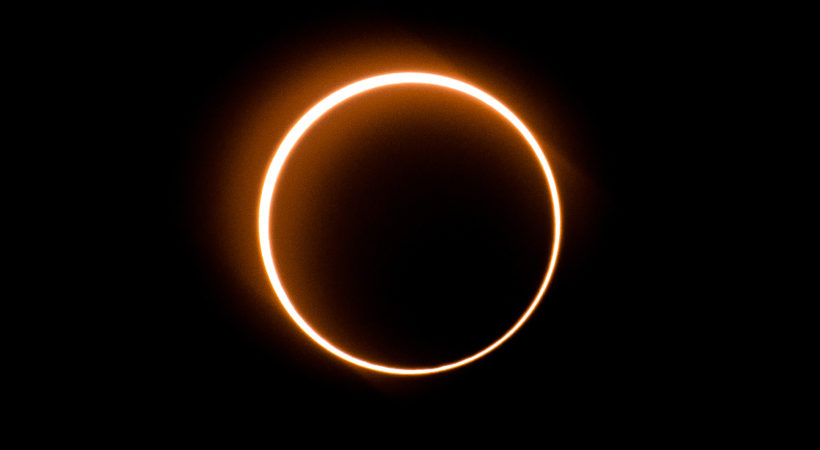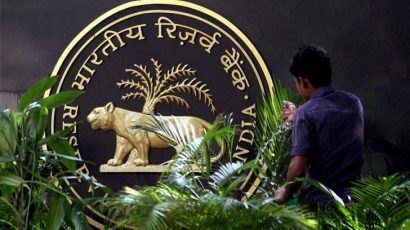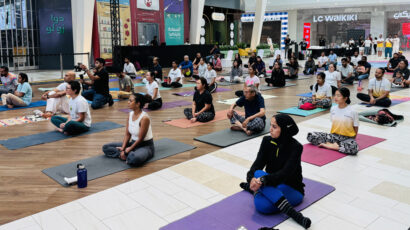The spectacular “ring of fire” show progresses in the sky

The annular solar eclipse which began today (Sunday)morning is progressing, It is visible in parts of northern India.The rest of the country including Delhi, Kolkatta and Mumbai can witness a partial view of the great show
The annular solar eclipse which began “in central Africa at sunrise in the Republic of the Congo, just west of the Ubangi River moved towards northeast. cutting through parts of the Democratic Republic of the Congo, Central African Republic, South Sudan, Sudan, Ethiopia, the Red Sea, Yemen, Saudi Arabia, Oman, the Gulf of Oman, Pakistan, and India. Then it turns east and finally southeast over China, Taiwan, and then out into the Philippine Sea, passing just south of Guam before coming to an end at sunset over the North Pacific Ocean.”
In India, the eclipse was first visible in Bhuj, Gujarat, at 9.58 am IST. It will be last seen in India in Dibrugarh, Assam, at 2.29 pm.
It has been visible from 10.12 am in Rajasthan ,Haryana and Uttarakhand,while a partial view of ii is possible in Delhi, Kolkatta and Mumbai. The eclipse was first visible in Bhuj, Gujarat, at 9.58 am IST. It will be last seen in India in Dibrugarh, Assam, at 2.29 pm.
Acccording to reports, the ring of fire will be visible in parts of northern Rajasthan (Gharsana, Anupgarh, Vijaynagaordig r, Suratgarh), peaking between 11.49 and 11.53 am, Haryana (Ellenabad, Sirsa, Jakhal, Tohana, Khanauri, Pehowa, Kurukshetra, Ladwa, Yamunanagar), peaking between 11.54 am and 12.03 pm, and Uttarakhand (Dehradun, New Tehri, Chamoli Gopeshwar, Joshimath), where it will peak progressively between 12.04 and 12.10 pm.
After the peak or full eclipse ends, it will turn partial and will continue to be visible along this path for another 90 minutes. The rest of the country does not lie in the path of the annular eclipse, and will see only a partial solar eclipse, which will peak when a maximum area of the sun is covered in that region:
Delhi: 93 per cent coverage of sun, peaking at 12.01 pm
Kolkatta: 65 per cent coverage of sun, peaking at 12.35 pm
Mumbai: 62 per cent coverage of sun, peaking at 11.37 am.
A solar eclipse happens when the new moon comes between the Earth and Sun. “There are a few types of solar eclipses, and this is an annular eclipse—derived from the Latin annulus, or ring-shaped—meaning that the new moon won’t directly block the sun and will instead leave a red-orange ring of sunlight visible in its path. Hence it is called “ring of fire”
“In an annular eclipse, the Moon is too far from the Earth to block the entire Sun, and at most leaves a ring of fire where sunlight pours out around every edge of the Moon,” explains a NASA blog.















